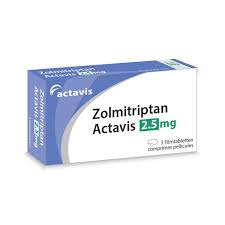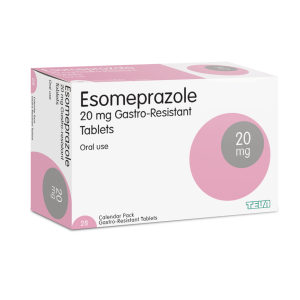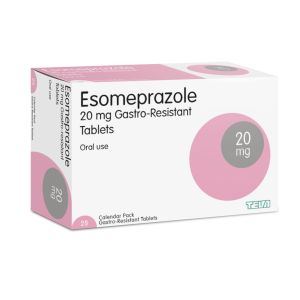Zolmitriptan 2.5mg (Generic Zomig) Tablets
- Safe & Discreet Available 24/7
- Fully inspected and regulated service
Zolmitriptan is a medication that provides fast-acting relief from symptoms associated with migraines. It is the generic version of the popular branded migraine treatment Zomig and is part of a group of drugs known as triptans (or 5-HT1 receptor agonists).These are shown to help relieve pain symptoms when traditional treatments such as painkillers are failing to provide relief.
Zolmitriptan is thought to reduce the widening of blood vessels in the head which causes migraine symptoms, helping to take away the headache, feelings of nausea and sensitivity to light and sound. It can also help any stiffness in the neck and shoulders and begins to work within 30 minutes to provide quick relief from pain.
Zolmitriptan also available as a nasal spray or in oraldispersible form for those who have trouble taking tablets.
See our other migraine relief product range, click here.
How to take Zolmitriptan
Zolmitriptan Orodispirsible is recommended for use for adults over the age of 18 and is intended to work only when a migraine has begun, and not for the prevention of an attack.
The recommended dose of Zolmitriptan is:
- one tablet (2.5 mg)- to be swallowed with a drink of water
- If your symptoms start to return you can take a second tablet if at least 2 hours have passed since the first tablet
- Do not take more than two doses in total in 24 hours unless prescribed by your doctor
- The maximum daily dose is 10mg
If you find the tablets are not giving you enough relief from your migraine, please consult your doctor.
Choosing strength
You should start initially with a lower strength of 2.5mg. If required, this dose may be doubled.
If you find that this dosage is not providing enough control for your migraine symptoms, you may require the higher 5mg dose of Zolmitriptan.
Migraine
A migraine is a primary headache disorder distinguished by recurrent headaches that can be moderate to severe, lasting from a few hours to a few days. It can feel like a throbbing pain on one side of the head and associated symptoms may include nausea, vomiting, and sensitivity to light, sound, or smell. It is a common health condition which often begins in early childhood affecting around one in every five women and around one in every fifteen men.
There are several different types of migraine, these include:
- migraine with aura – this is where there are specific warning signs just before the migraine begins, such as seeing flashing lights
- migraine without aura – this is the most common type, where the migraine occurs without the specific warning signs
- migraine aura without headache (also known as silent migraine) – this is where an aura or other migraine symptoms are experienced, but a headache doesn’t develop.
Some people have experience migraines frequently- up to several times a week whilst others will only have a migraine occasionally. It is possible for years to pass between migraine attacks.
When to seek medical advice
If you are experiencing frequent or severe migraines, you should consult your GP even if you are managing to control these with medication as you may benefit from a preventative treatment.
Whilst painkillers such as paracetamol and ibuprofen can help ease migraines, taking these continuously may make it harder to treat headaches over time.
Causes of migraines
There is no exact cause of migraines though it is thought they arise from a result of a temporary change in the chemicals, nerves and blood vessels in the brain. Around half of people who suffer with migraines also have a close relative with the condition which suggests that genes may be a factor.
Migraine Triggers
Some people find migraine attacks are associated with certain triggers- emotional, physical, dietary and environmental factors all can play a part.
Emotional triggers include:
- stress
- anxiety
- tension
- shock
- depression
- excitement
Physical triggers include:
- tiredness
- poor quality sleep
- shift work
- poor posture
- neck or shoulder tension
- jet lag
- low blood sugar (hypoglycaemia)
- strenuous exercise (if you’re not used to it)
- starting their period
Dietary triggers include:
- missed, delayed or irregular meals
- dehydration
- alcohol
- the food additive tyramine
- caffeine products, such as tea and coffee
- specific foods such as chocolate, citrus fruit and cheese
Environmental triggers include:
- bright lights
- flickering screens, such as a television or computer screen
- smoking (or smoky rooms)
- loud noises
- changes in climate, such as changes in humidity or very cold temperatures
- strong smells
- a stuffy atmosphere
Treating migraines
Whilst there is no cure for migraines there are several treatments available that can help reduce their symptoms
These include:
- painkillers – these include over-the-counter medications such as paracetamol and ibuprofen
- triptans – medications that can help reverse the changes in the brain that may cause migraines
- anti-emetics – medications often used to reduce nausea and vomiting
- During an attack, many people find that sleeping or lying in a darkened room can also help.
Preventing migraines
If you have identified certain triggers are causing your migraines such as stress or a specific type of food, avoiding these triggers may help reduce your chances of developing a migraine.
It would also be beneficial to maintain a healthy lifestyle, including regular exercise, enough sleep and consistent meals, together with staying hydrated and limiting your intake of caffeine and alcohol.
If your migraines are severe and/or you have tried avoiding possible triggers and are still experiencing symptoms, your GP may prescribe medication to help prevent future attacks.
Outlook
Migraines can have a debilitating effect of the lives of those who suffer and hinder daily activities with some people finding they must stay in bed for days at a time. However, there are treatments available to help reduce symptoms and prevent further attacks so that quality of life can be improved. Whilst migraine attacks can often get worse over time they can also gradually improve across many years for a lot of people.















